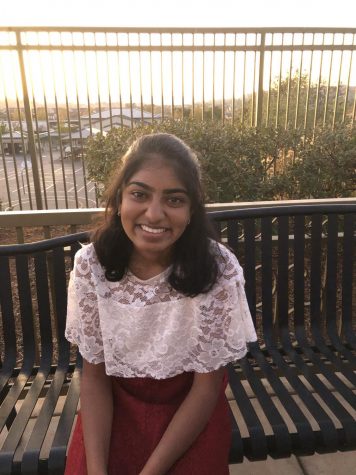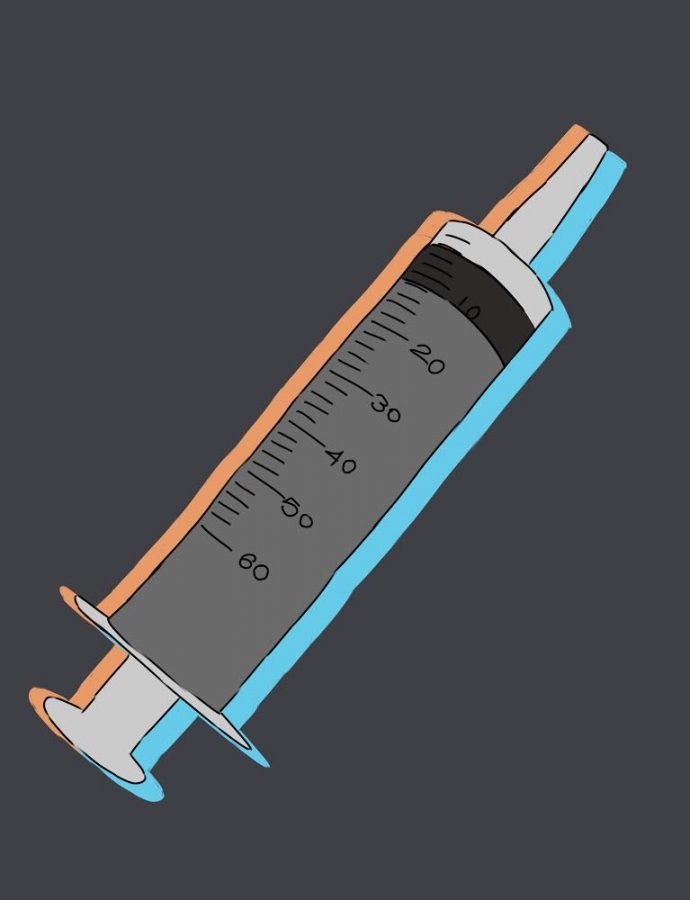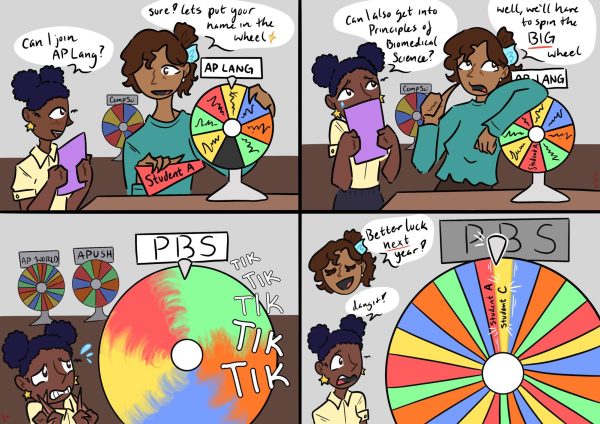Why the district should mandate the COVID-19 vaccine
Staff writer Ridhi Goyal argues that the San Ramon Valley Unified School District should mandate that students and staff received the COVID-19 vaccine before they return to campus in August.
Opinion columns reflect the view of the staff writer.
After more than a year of life in a global pandemic, the beginning of the national COVID-19 vaccine rollout has signaled the “new normal” that we have all anxiously been waiting for since schools were shut down in March 2020.
But as the San Ramon Valley Unified School District community finally prepares to return to campuses full-time in the fall for the 2021-22 school year, the excitement has been paralleled with fears regarding the safety of students and faculty.
While the continuation of masks and social distancing provides a little solace in this situation, epidemiologists, the media, and a sizable part of the government have managed to agree on one thing: the COVID-19 vaccines produced by Pfizer, Moderna, and Johnson & Johnson are the most robust defense against infection and the best step toward achieving herd immunity and the new normal.
Now that the vaccine has been approved for emergency use for everyone 12 and older, and is projected to be approved for younger children by the fall of 2021, the district should seriously consider mandating vaccination for all eligible students and faculty to ensure a productive and safe return to the school environment.
Despite the controversial nature of vaccination in American society, its administration has played a significant part in states’ reopening procedures. Plans for a full economic reopening in California on June 15 were announced on May 21, and they included provisions for masking, traveling, and COVID testing and vaccination.
Even as the vaccination is being written into most public reopening policies, its role in the return to school has been largely up in the air. In planning out the next school year, the district must respect student safety and engagement during their time in school.
One of the most important considerations in student life is that vaccine eligible students are currently in middle and high school, where they are moving from class to class and risk spreading disease if even a single person is carrying the virus. Plus, the risk of infection is larger when collective activities and school extracurriculars are brought into the picture.
The implementation of hybrid learning this year was met with overwhelmingly positive feedback from students who returned to school. But the full return to school will mean a population of about 3,000 people on campus, compared to fewer than 500 right now. With these numbers, the eventual spread of disease may be inevitable without proper vaccination mandates from the district Board of Education.
Although social distancing measures have been increasingly relaxed across public institutions throughout the state, local and global COVID-19 trends have proven that we are not out of the woods just yet. With new strains of the virus emerging around the world, government and educational institutions need to be wary of the danger that comes with a premature relaxation of regulations.
Currently, new waves of COVID have impacted countries in Asia, with India’s plight at the forefront of media attention. Latin America and the Caribbean also have been hit hard. The surge of cases, although seemingly distant, has the potential to impact all of us in the coming months. With India’s daily cases surpassing 400,000, we cannot disregard the potential for more local surges.
But even as we find ourselves on the path to social and economic recovery, the importance of vaccination remains at the center of experts’ attention. Specifically, it is considered the most important step toward herd immunity given that 70-85 percent of the population receives the vaccine. Census data shows that children make up 20 percent of the nation’s population, so institutions implementing vaccine regulations should take large school populations into account.
Other school districts in California have begun implementing stricter measures to ensure the safety of students and faculty returning to campus next fall.
The Los Angeles Unified School District, one of the nation’s largest school districts, expressed its intent to mandate the vaccine back in January 2021 and eventually added it to the list of required school immunizations. Their position on the return to school is in line with a proliferation of school vaccination requirements in response to disease outbreaks, such as measles, as well as general public health policy initiatives.
This brings up a crucial point about the perception of the pandemic by our community. Rather than being a fleeting interruption in the world’s economy and societies, COVID-19 is a culmination of the fears that experts have held for decades. In truth, we knew for a long time that a global disease pandemic was a distinct and potentially destructive possibility.
It’s important to recognize the issue of freedom and autonomy when considering mandating the vaccine. For many people, getting the COVID-19 vaccine, which has yet to be approved by the FDA, contradicts personal beliefs. But the CDC has confirmed that the vaccines are effective in limiting the scope and effect of infection and could potentially lead to herd immunity if largely unopposed.
As we emerge from this pandemic after more than a year of safety measures and isolation, we should base safety requirements on statistics and expert analysis, not a fear of losing autonomy in vaccination decisions.
More importantly, we need to consider the safety of students and faculty who have been sequestered in their homes for the past academic year. We all want to return to our normal, productive campus for the 2021-22 school year, but it is crucial that we do it the right way.

Ridhi Goyal is a first-year reporter for The Californian and a sophomore at California High School in San Ramon, where she has lived for 9 years. She found...

Lily Hansen is a freshman at california high school. She is a writer for the newspaper. She loves to produce music, write songs and sing.She also is really...


